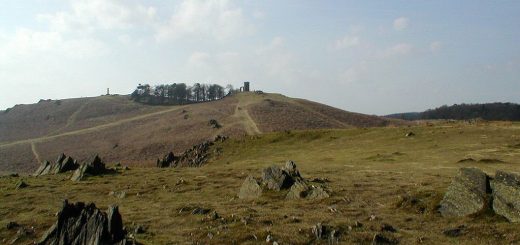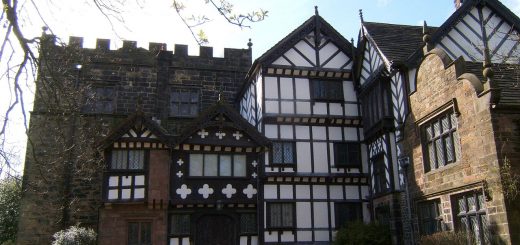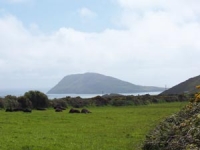Leeds Town Hall
Beneath the front steps of Leeds Town Hall is the old Central Charge Office or Bridewell (a general term for a small prison), the reputed haunt of the ghost of the notorious burglar and murderer Charles Peace.
Leeds Town Hall was designed by Cuthbert Broderick and completed in 1858. Opened by Queen Victoria, it is the seventh highest building in Leeds (225 ft) and one of the largest Town Halls in Britain. At the time of construction the western side of the basement housed thirteen cells, a Police Office and accommodation for the gaoler and his wife (a converted cell). This was extended out under the front steps in 1864. The building was modernised again in 1937 then subsequently closed in 1993 in favour of the new Magistrates Court building.
 Charlie Peace (1832 -1879) was described in Charles Whibley’s ‘A Book of Scoundrels’: “Not only had he reduced house-breaking to a science, but, being ostensibly nothing better than a picture-frame maker, he had invented an incomparable set of tools wherewith to enter and evade his neighbour’s house…..He lived the king of housebreakers, and he died a warning to all evildoers, with a prayer of intercession trembling upon his lips. At a single stride he surpassed his predecessors; nor has the greatest of his imitators been worthy to hand on the candle which he left at the gallows.”
Charlie Peace (1832 -1879) was described in Charles Whibley’s ‘A Book of Scoundrels’: “Not only had he reduced house-breaking to a science, but, being ostensibly nothing better than a picture-frame maker, he had invented an incomparable set of tools wherewith to enter and evade his neighbour’s house…..He lived the king of housebreakers, and he died a warning to all evildoers, with a prayer of intercession trembling upon his lips. At a single stride he surpassed his predecessors; nor has the greatest of his imitators been worthy to hand on the candle which he left at the gallows.”
Charles Peace was born in Sheffield on 14 May 1832 and served an apprenticeship in a rolling-mill before being injured and taking up the career of playing and selling musical instruments. He was supposed to have been good at playing string instruments, including the violin, performing in public houses and small local concerts. : “A complex mind,” said Holmes. “All great criminals have that. My old friend Charlie Peace was a violin virtuoso.” This was Sir Arthur Conan Doyle mention of Peace in The Adventure of the Illustrious Client (1924). Peace was one of the few real life criminals to appear in his Sherlock Holmes stories. In November 1876 Peace murdered a police officer named Arthur Dyson and went into hiding with a £100 reward on his head. He adopted the name of Thompson and lived in East Terrace, Peckham, London where he continued his string of burglaries until the early hours of 10th October 1878 when he was seen whilst breaking into 2 St John’s Park. PC Edward Robinson gave chase after Peace leapt from a window. Peace opened fire five times on Robinson with at least one wounding him. Robinson however continued the chase and apprehended him.
Peace gave his name as John Ward and was sentenced on 19th November 1878 to life imprisonment for the attempted murder of PC Robinson who was awarded £25 for his bravery. Eventually the true identity of Pearce was learnt from his girlfriend Susan Grey and he was taken North to stand trial for the murder of Arthur Dyson.
On 3rd February 1879 Charlie Peace was brought to the cells under the Town Hall from Armley, ready to stand trial the following day. The trial took place in Leeds Azzies on 4th February 1879 and the Jury took just 12 minutes to find him guilty of murder. Peace was sentenced to death.
Charles Peace was hanged on 25th February 1879, but just before his death he confessed to a priest that he committed a second murder. Several years earlier he had shot PC Nicholas Cook dead in Manchester after he had disturbed Peace on a burglary. William Habron, an eighteen year old was convicted of the murder, watched by Peace who attended the trial. There are a number of sources on the internet that show William Habron being executed for Charles Peace’s crime. In actual fact after Peace’s confession to Rev Lockwood in his cell, Habron was released. He had served three years for a crime he had not committed but received a £500 indemnity for his erroneous conviction.
The original Will of Charles Peace, dated 7th February 1879 has recently been discovered according to The Star on 12th February 2008, in which he bequeathed all he had to his wife Hannah Peace. Prior to his execution Peace is supposed to have shown real remorse for his actions and repented his crimes.
As for the haunting I can find no mention of the haunting manifests itself. Is it an apparition, strange noises or ghostly footsteps? I would greatly appreciate any information regarding this. As for why the haunting is attributed to Peace, again I cannot be sure, especially as he was not there very long.
A Tale of Stone Lions
The following local Folktale was contributed by one of our readers:
Sometimes, no-one really knows when or why, the big clock that resides above the Town Hall strikes thirteen. It doesn’t happen often, and it usually happens at night, but not always.
When this happens, all the people ‘freeze’, as if time stands still. Then the four white lions that guard the entrance to the building begin to move, very slowly at first, as if they had been frozen themselves for a long, long time.
They stand up, stretch, greet each other lovingly and move around the city, but not too far from the steps of the old building. After a while they would return to their places of residence at the foot of the steps. As soon as all four lions had become solid once more the people around the city carried on as normal.
The only proof that this happened was that the lions NEVER returned to their previous positions exactly, there were always subtle differences in posture and facial expression.




Leeds Town Hall Lions.
Great article Ian, and thank you for posting my contribution in honour of my Dad about the four lions.
Many warm regards
Alison Brierley
(Tribal Ali)
xxx